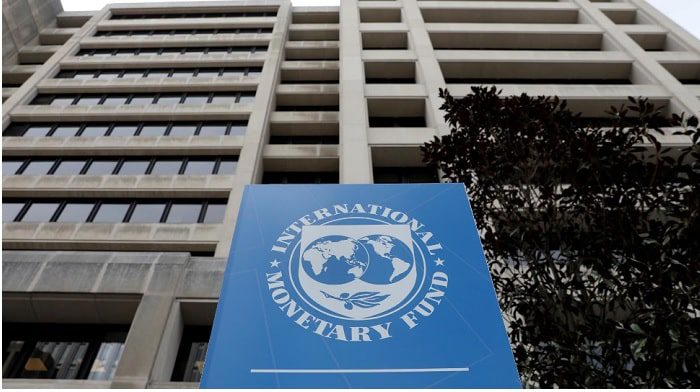In a recent move, the International Monetary Fund- IMF went on to raise its forecast for worldwide growth, estimating 3.1% in 2024. But it is well to be noted that Europe’s prospects are not all that positive.
Global growth is stronger than expected and, in all likelihood, is going to be 3.1% in 2024, similar to what was in 2023, as the US as well as emerging economies have gone on to show resilience to previous crises, with robust consumption throttling the growth, as per the International Monetary Fund- IMF.
The IMF has gone on to elevate its previous forecast by 0.2% in its most updated World Economic Outlook report, taking into account upgrades for China, the US, as well as some large developing economies.
Worldwide GDP is anticipated to speed up slightly in 2025, by 3.2%.
But global growth happens to be historically low, and the average international GDP of the years 2000-2019 was 3.8%.
Shaky progress in Europe
Europe’s outlook has been somewhat downgraded for this year, mostly due to weaker-than-anticipated growth in 2023. Apparently, tight monetary scenarios and, in some cases, the withdrawal of fiscal support post-pandemic, teamed with low productivity, held back Block’s performance.
The IMF expected that the Eurozone economy has gone on to expand by 0.5% in 2023.
Further this year, the IMF has gone ahead and lowered its forecast by 0.3% as compared to its previous report in October last year, and now it goes on to project a recovery, with the growth in GDP reaching 0.9% in the block, pushed by stronger household consumption since slower inflation along with real income growth arise.
The UK economy is also experiencing a much similar scenario, with a slight recovery of 0.6% progress in 2024, following an anticipated 0.5% in 2023, since the lagged adverse effects of high energy prices wane. In 2025, the UK economy is projected to bloat by 1.6%, as disinflation is most likely going to result in the Bank of England easing off financial conditions with the recovery of real incomes.
Germany, which happens to be the strongest economy in the EU, is most likely to see a contraction, with its GDP projected to fall by 0.3% in 2023 and henceforth will recover by reaching a growth of 0.5% in 2024 before attaining 1.6% in 2025.
The second-biggest economy in the bloc, France, is anticipated to have 1% and 1.7% growth in 2024 and 2025, respectively.
Italy, on the other hand, has the weakest outlook when it comes to the leading economies in the Eurozone, as the IMF anticipates 0.7% growth in 2023 and 2024 and just about 1.1% for 2025.
Spain is most likely to see 1.5% growth in 2024 after witnessing 2.4% in 2023, and is set to get back on the path with 2.1% next year.
The forecast also notes that Russia has gone on to show a more robust-than-expected performance in 2023 because of high military spending along with strong consumption.
All these happened to play a key role in the IMF raising Russia’s GDP anticipations to 2.6% in 2024, which could get followed by a sharp dip and show just 1.1% growth in 2025.
Growth across the world: resilient, however, slow
The US, however, proving to be much more resilient than anticipated, happens to be facing a slowdown from its present peaks.
Majorly because of the tight monetary conditions and also due to the elevated borrowing costs, the IMF anticipates the US GDP to slow down from 2.5% in 2023 to 2.1% in 2024 and 1.7% in 2025. The US economy is all set to have the lagged effects of gradual fiscal tightening, the labor market being softer, fewer vacancies, and just about higher unemployment.
This could go on to lower consumption, the source when it comes to two-thirds of the growth in the world’s biggest economy.
But for 2024, the IMF has gone on to add an upward revision of 0.6% since the October 2023 report that is based on the results of stronger-than-expected progress in 2023.
How developing economies are performing?
What is being witnessed as the engine of worldwide growth may as well have no more steam, as progress when it comes to emerging and developing Asia is most likely going to decline in the next couple of years. It is worth noting that the IMF’s estimation is 5.4%, 5.2%, and 4.8% for 2023, 2024, and 2025, respectively.
But this year’s forecast has been altered upwards by 0.4%, especially because of better-than-expected performance coming from the Chinese economy.
Descending inflation throughout the world
Both headlines, along with core inflation, happen to be declining in the next two years, with advanced economies right at the forefront.
Worldwide headline inflation, which includes volatile food and energy prices, is anticipated to fall from an expected 6.8% in 2023 to 5.8% in 2024 and 4.4% next year.
Advanced economies are also expected to witness a much faster disinflation, thereby reaching 2.6% in 2024. It is well to be noted that the inflation target for the European Central Bank, the Bank of England, as well as the Federal Reserve happens to be 2%.
This could as well leave room for easing tight monetary conditions across the US and Europe.
The IMF goes on to project key rates in order to remain at present levels for the Federal Reserve, the European Central Bank, as well as the Bank of England till the second half of 2024, before gradually dipping as inflation goes on to move much closer to targets.
The risks on the horizon
The report goes on to note that economic growth can go on to be even higher than the present forecast because of faster-than-expected disinflation as well as prolonged supportive fiscal policy throughout the world and also a speedier recovery in China, and if at all the artificial intelligence happens to be raising productivity in the medium term.
But the growth could be held back due to new commodity price spikes from geopolitical shocks, such as continued attacks in the Red Sea fuelling inflation, thereby leading to elevated rates for a longer than thought-about period. This would indeed keep businesses from borrowing money as well as investing, slowing down economic progress.
It is well to be noted that the faltering growth in China, mostly fuelled by fears of its property sector, could go on to leave a serious mark on the international economy, as it offers 25% of its GDP.
The IMF goes on to advise policymakers to carefully put together the final descent of inflation, while it is also significant to gradually withdraw fiscal support, built up in the course of the COVID-19 pandemic, stressing that government debts are reaching pretty high levels.
The fact is that looser fiscal policy could support growth temporarily, but it is time to rebuild buffers so as to prepare for future shocks as well as achieve debt sustainability, as noted in the report.
As per the IMF, the required structural reforms would go on to reinforce productivity progress and also debt sustainability. Furthermore, more efficient multilateral coordination happens to be needed, among other things, in order to create space for required investments and also to mitigate the effects of climate change.






















